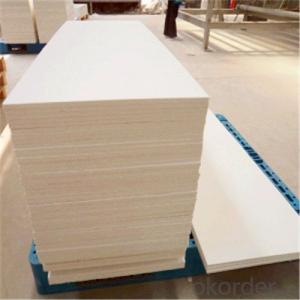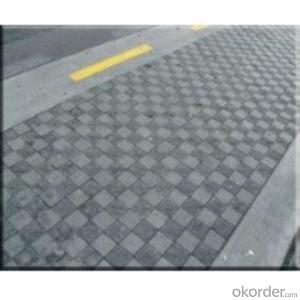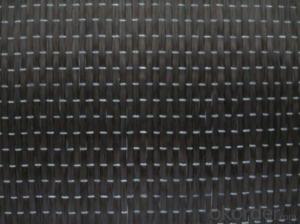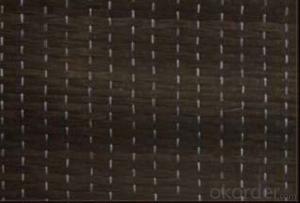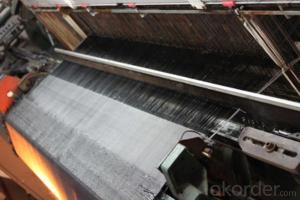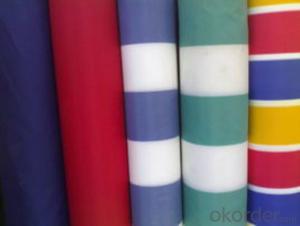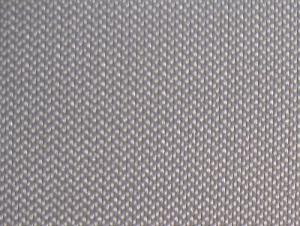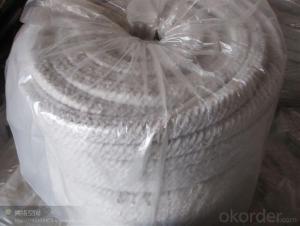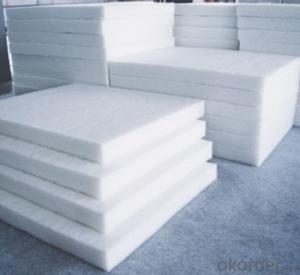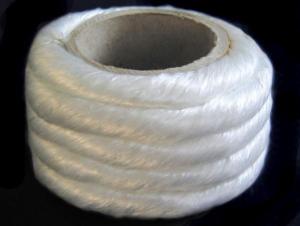Thermal Insulation Ceramic Yarn Product
- Loading Port:
- Qingdao
- Payment Terms:
- TT OR LC
- Min Order Qty:
- 500 m
- Supply Capability:
- 2000 m/month
OKorder Service Pledge
OKorder Financial Service
You Might Also Like
Specifications
1. Ceramic fiber yarn.
2. Classfication Temp:1260C.
3. Low thermal conductivity.
Tech Data:
Colour | White | |||||
Al203+sio2% | >=97 | |||||
Fiber diameter(um) | 2-4 | |||||
Fiber Iength(mm) | 100-200 | |||||
Bulk density(Kg/m3) | 300-700 | |||||
Moisture % | <=1.0 | |||||
Thermal Conductivity(Hot face),w/m.k | 0.12~0.13(300°C) | |||||
Heating liner shringkage(%) | <=3.5(1000°C*3h) | |||||
High-temperature loss on lgnition | 10 | 15 | 20 | 15 | 20 | 25 |
Safe working temp°C | <=1000 | <=450 | ||||
Acid-resistance and alkali-resistance% | 50(10% NaoH After 72 hours) | |||||
Reinforced material | Stainless Steel | Glass filament | ||||
Application:
Ceramic fiber yarn used in producing ceramic fiber tape, ceramic fiber rope, ceramic fiber cloth and fabrics.
Used in high temperature sealing and insulation.
Hitex ceramic fiber yarn is made from alumina silica ceramic fiber, free of asbestos, can be used in different industrial applications under temperatures up to 2300 °F (1260 C) and has excellent chemical stability and strong resistance to thermal shock and corrosion attack. Exceptions are hydrofluoric and phosphoric acids and concentrated alkalis. It also resists oxidation and reduction,
- Q:Are glass fiber textiles resistant to wrinkling?
- Yes, glass fiber textiles are generally resistant to wrinkling. Glass fibers are known for their inherent strength and rigidity, which helps to maintain the shape and structure of textiles made from them. Additionally, glass fibers have a low coefficient of thermal expansion, meaning they do not expand or contract significantly with changes in temperature, further contributing to their wrinkle-resistant properties. This makes glass fiber textiles highly durable and less prone to wrinkling compared to other materials. However, it is important to note that the overall wrinkle resistance of a textile can also depend on factors such as the specific weave or construction of the fabric, as well as the finishing treatments applied to it.
- Q:Can glass fiber textile be used in pressure vessels?
- Certainly, glass fiber textiles have the capability to be utilized in pressure vessels. Known also as glass fiber fabrics, these textiles are fabricated from woven or non-woven glass fibers. Their mechanical characteristics, such as their remarkable tensile strength and stiffness, render them well-suited for incorporation into pressure vessels. Pressure vessels are specially designed containers engineered to contain fluids or gases at elevated pressures. They find application across a range of industries, including oil and gas, chemical processing, and power generation. The materials employed in pressure vessels must possess the ability to endure the internal pressure without any deformation or failure. Due to their exceptional strength-to-weight ratio, glass fiber textiles are frequently employed in the construction of pressure vessels. Not only are they lightweight, but they also exhibit excellent resistance to chemicals, making them ideal for use in demanding scenarios. Additionally, glass fiber textiles can be conveniently shaped into intricate forms, allowing for the creation of custom pressure vessel designs. Moreover, glass fiber textiles boast superb thermal properties. With their low thermal conductivity, they effectively impede heat transfer between the contents of the pressure vessel and the external environment. This characteristic proves particularly advantageous in applications where precise temperature control is crucial, such as during the transportation and storage of cryogenic materials. To summarize, the use of glass fiber textiles in pressure vessels is indeed viable. Their high strength, resistance to chemicals, and thermal properties render them an appropriate choice for a variety of pressure vessel applications.
- Q:How do glass fiber textiles perform in terms of electrical conductivity?
- Glass fiber textiles are known for their excellent electrical insulating properties. This means that they have very low electrical conductivity. The glass fibers used in these textiles are non-conductive materials, making them ideal for applications where electrical insulation is required. Unlike metal or other conductive materials, glass fibers do not allow the passage of electrical current, preventing short circuits or electrical leakage. Additionally, glass fiber textiles can resist high voltages without breaking down, maintaining their electrical insulation properties even under extreme conditions. Overall, glass fiber textiles offer exceptional performance in terms of electrical conductivity by providing reliable insulation and protection against electrical hazards.
- Q:Is glass fiber textile fire-resistant?
- Yes, glass fiber textile is fire-resistant.
- Q:What are the different surface finishes available for glass fiber textiles?
- Depending on the desired characteristics and intended application, glass fiber textiles offer various surface finishes. One option is a polymer sizing or finish, which safeguards the fibers during manufacturing and enhances their compatibility with other materials like resins or coatings. Another choice is a thermal or heat-resistant coating that is ideal for glass fiber textiles exposed to high temperatures. This coating fortifies the textile's heat resistance and prevents fiber degradation or melting. For applications requiring moisture resistance, a water-resistant or hydrophobic treatment can be applied to glass fiber textiles. This treatment ensures water absorption resistance, making it useful for outdoor fabrics or insulation materials. Moreover, specific surface finishes are available to provide properties such as flame resistance, electrical conductivity, or antimicrobial properties. These finishes are tailored to improve the performance of glass fiber textiles in specific applications. It is important to consider that the availability of surface finishes may vary among manufacturers and depend on the textile's intended use. It is advisable to consult with suppliers or manufacturers to determine the most suitable surface finish for a particular application.
- Q:Can glass fiber textiles be used for making upholstery?
- Yes, glass fiber textiles can be used for making upholstery. Glass fiber textiles have excellent durability, strength, and fire resistance properties, making them suitable for upholstery applications. They are commonly used in industries such as automotive, aviation, and marine where high-performance upholstery is required.
- Q:Can glass fiber textiles be used in protective clothing?
- Yes, glass fiber textiles can be used in protective clothing. Glass fiber textiles are known for their high strength, heat resistance, and excellent insulation properties. These qualities make them suitable for protective clothing applications where protection against heat, fire, and chemicals is required. Additionally, glass fiber textiles can also provide protection against cuts and abrasions, making them a versatile choice for various industries such as firefighting, manufacturing, and construction.
- Q:Is GRP glass or steel?
- That is, fiber reinforced plastics, generally refers to the use of glass fiber reinforced unsaturated polyester, epoxy resin and phenolic resin matrix.
- Q:How do glass fiber textiles perform in terms of stretch and recovery?
- Glass fiber textiles, unlike other synthetic or natural fibers, generally lack the stretch and recovery capabilities. This is due to their inherent brittleness and rigidity, which limits their elasticity and prevents them from stretching and recovering like fabrics made from materials such as spandex or elastane. Glass fibers are more likely to break or deform when exposed to excessive strain or tension. Consequently, glass fiber textiles are not frequently employed in applications where stretch and recovery properties are crucial, such as activewear or garments that require flexibility.
- Q:How are glass fiber textiles used in the construction industry?
- Glass fiber textiles, also known as fiberglass, are widely used in the construction industry for various applications. They are primarily used as reinforcement materials in concrete structures, such as beams, columns, and slabs. Glass fiber textiles enhance the strength and durability of the concrete, making it more resistant to cracking and deformation. Additionally, they are used in the production of insulation materials for walls, roofs, and pipes, providing thermal and acoustic insulation properties. Glass fiber textiles are also used in the manufacturing of composite materials for cladding, facade systems, and reinforcement of composite panels. Overall, glass fiber textiles play a crucial role in improving the structural integrity, insulation, and aesthetic appeal of construction projects.
1. Manufacturer Overview |
|
|---|---|
| Location | |
| Year Established | |
| Annual Output Value | |
| Main Markets | |
| Company Certifications | |
2. Manufacturer Certificates |
|
|---|---|
| a) Certification Name | |
| Range | |
| Reference | |
| Validity Period | |
3. Manufacturer Capability |
|
|---|---|
| a)Trade Capacity | |
| Nearest Port | |
| Export Percentage | |
| No.of Employees in Trade Department | |
| Language Spoken: | |
| b)Factory Information | |
| Factory Size: | |
| No. of Production Lines | |
| Contract Manufacturing | |
| Product Price Range | |
Send your message to us
Thermal Insulation Ceramic Yarn Product
- Loading Port:
- Qingdao
- Payment Terms:
- TT OR LC
- Min Order Qty:
- 500 m
- Supply Capability:
- 2000 m/month
OKorder Service Pledge
OKorder Financial Service
Similar products
New products
Hot products
Hot Searches
Related keywords


